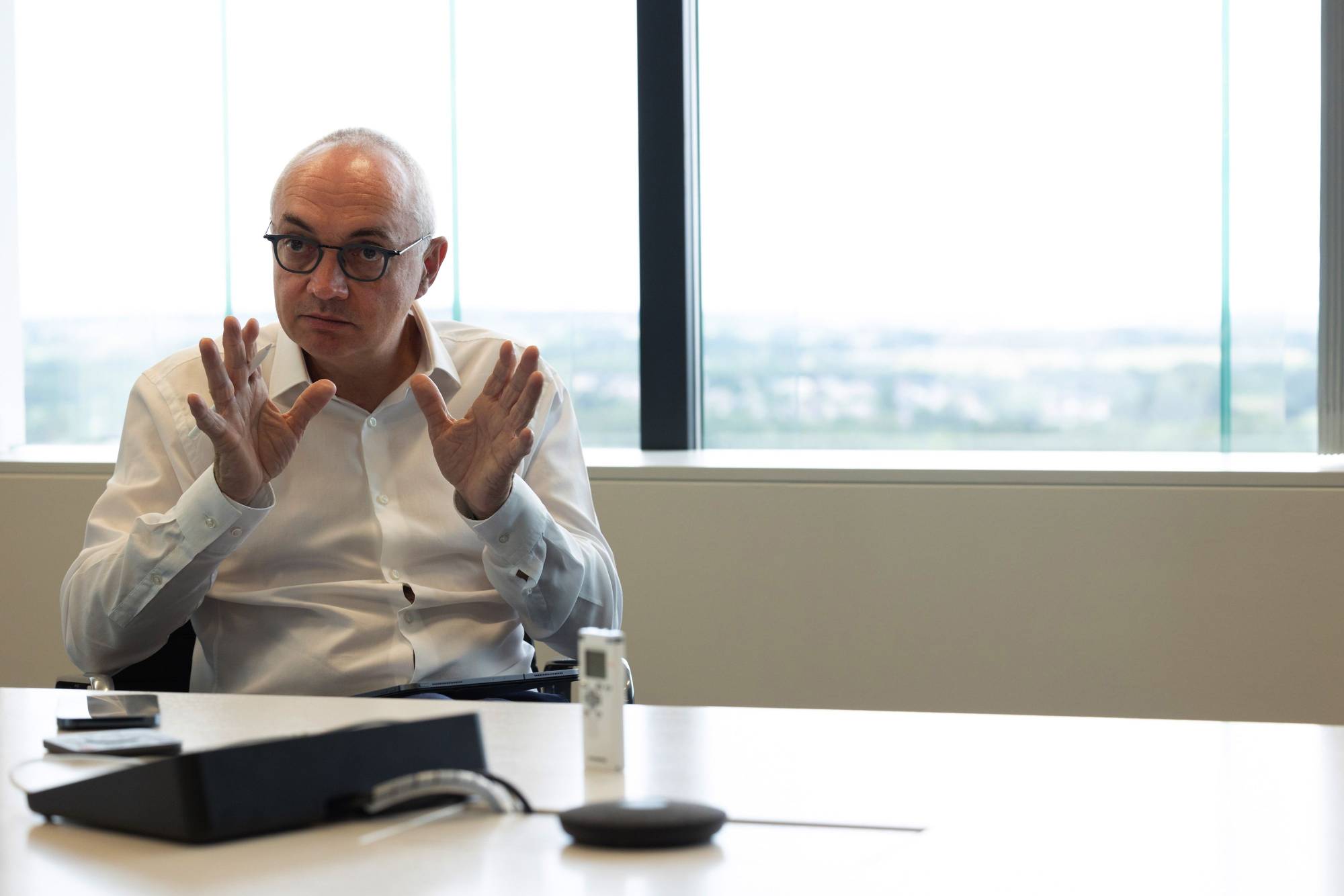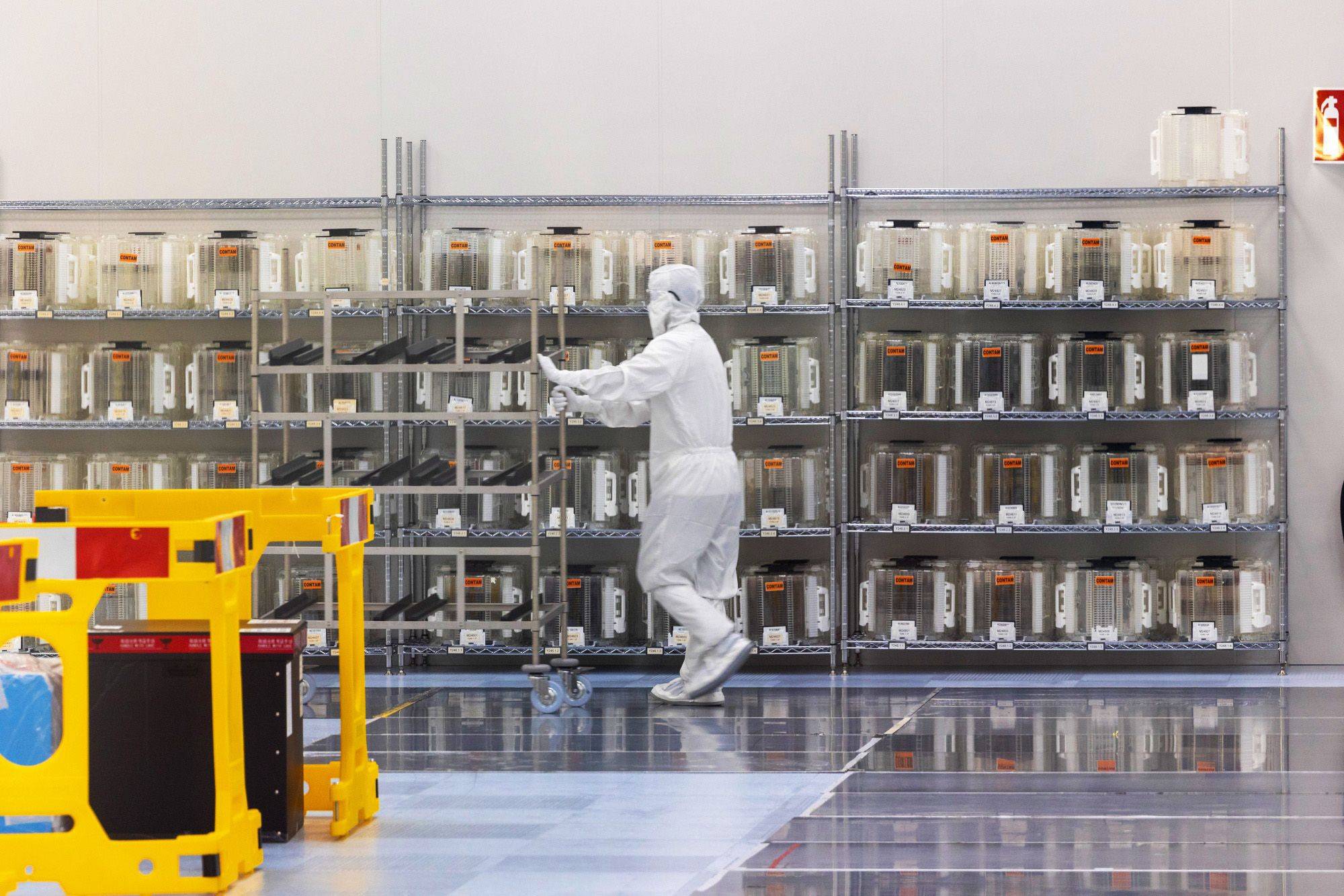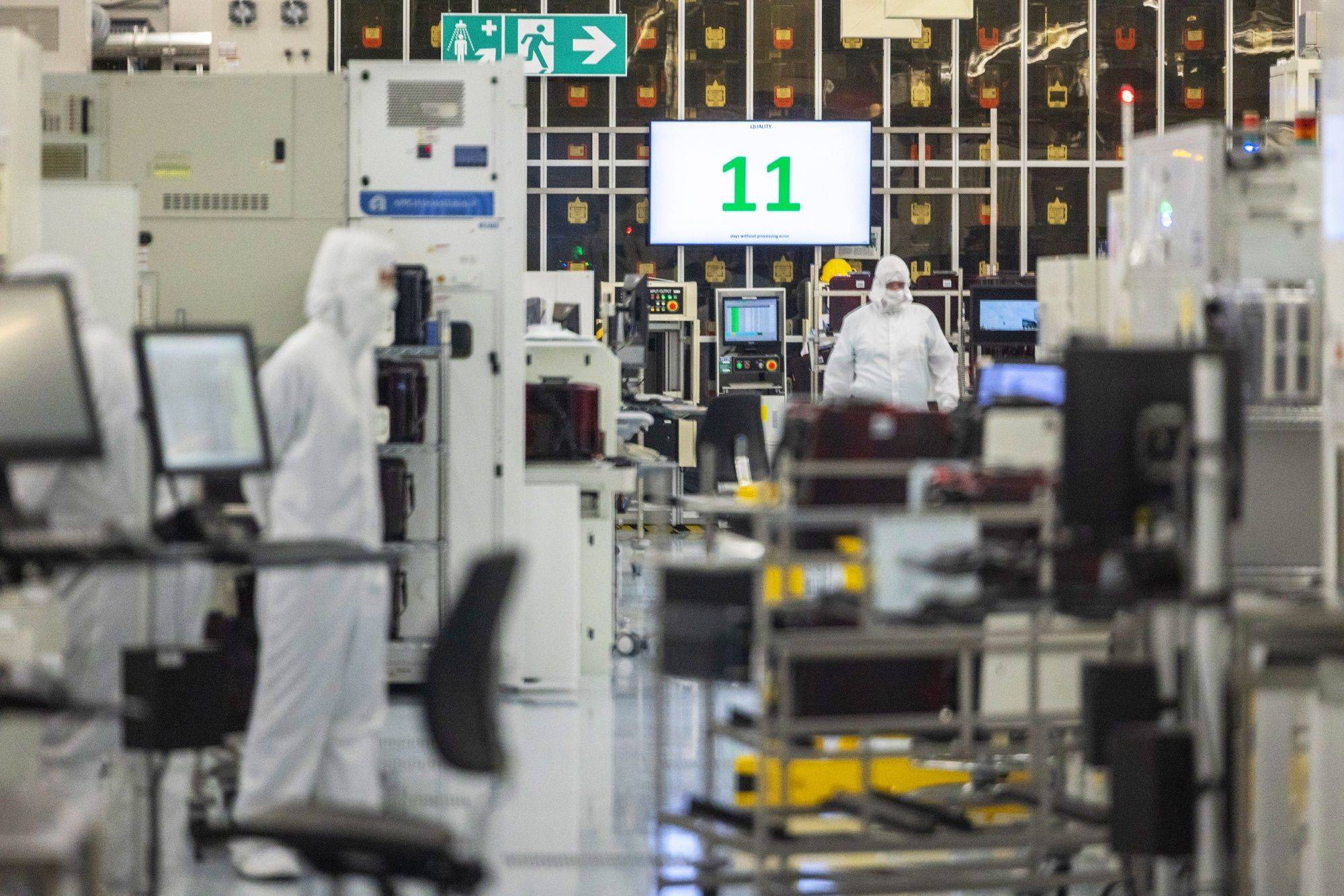The historic Belgian city of Leuven is known for its centuries-old university and as the headquarters of brewing giant Anheuser-Busch InBev NV. Less so as the location of a semiconductor research organization that is now the center of both political and industry attention.
The Interuniversity Microelectronics Center (IMEC) may be Belgium’s best-kept secret, but it’s in global demand for its work on the future of computer chips, with applications in areas from genome sequencing to autonomous driving.
It’s also increasingly in the sights of governments as chips become political weapons in the U.S.-China tech conflict. Crippling industry shortages during the pandemic have meanwhile set off a scramble for access to advanced research as the U.S., China, Japan and Europe all seek greater self-reliance in semiconductor production.
The European Commission is consulting with IMEC on its plans to build out the continent’s chip capacity. A South Korean ministerial delegation visited this month. It was name-checked in last month’s White House review of the U.S. supply chain alongside ASML NV of the Netherlands, which has a virtual monopoly on the machines needed to make the most advanced chips. In the words of one Washington observer, IMEC is one of those places very few people know about but which everyone should.
“We have never been so much in the spotlight as today,” Chief Executive Officer Luc Van den hove said in an interview in his office on the 15th floor of the futuristic IMEC Tower, which offers 360 degree views of the countryside just outside the historic town center. “We have received much more attention than ever before from the politicians: local politicians, European politicians, U.S. politicians.”
Chinese politicians, too. Premier Li Keqiang visited in October 2018 — before tensions over trade with the Trump administration expanded to chips — and stressed the “vast business opportunities” of working with “the world’s largest market,” according to an account of the visit posted on the Chinese government’s website.
Imec had previously joined with Huawei Technologies and Qualcomm Inc. to help China’s biggest chipmaker, SMIC, set up a research and development company. But within eight months of Li’s visit, the U.S. Commerce Department added Huawei to its entity list and a cascade of export controls ensued, targeting China’s access to U.S. chip technology.

Today, IMEC participates in a scholarship program to fund postdoc researchers from China and, according to local media reports, in February became a member of the Wuxi municipal semiconductor industry association in Jiangsu province, a key chip-production area. But its presence in China is less than five people, and it doesn’t do any R&D there, according to Van den hove.
“The situation three or four years ago when that happened was very different from the situation today,” Van den hove said of the Li visit, when asked about the insertion of politics into the industry.
He added IMEC adheres strictly to export regulations, including those imposed by Washington, and insisted IMEC’s research capacity hasn’t been harmed by the political strains. “But we also have to be realistic and face the facts that these geopolitical tensions at this moment are increasing.”
IMEC was founded in 1984 by the regional government of Flanders, and it now has about 4,500 staff including research students. Some 75% of funding comes from its partners among the main chipmaking giants, from Intel Corp. and Taiwan Semiconductor Manufacturing Co. to Samsung Electronics Co. and Applied Materials Inc.



It has enjoyed a key relationship over the past thirty years with ASML, using the company’s lithography machines to become the leading research hub for what’s known as scaling: making chips with ever-smaller and more powerful features. Its facilities include a €2.5 billion ($3 billion) “pilot line,” that allows researchers to work on chipmaking processes that are typically two-to-three generations ahead of the current leading-edge manufacturing. So whereas the most advanced chips in the world are measured at 5 nanometers, or billionths of a meter, IMEC is already working on 2 nm and below.
Germany’s Fraunhofer institutes and CEA-Leti of France also conduct chip research in Europe, while TSMC cites the Semiconductor Research Corporation of the U.S. as a partner alongside IMEC. But the scope of the Belgian organization’s research is regarded as giving it a lead.
“Europe has two jewels,” Intel CEO Pat Gelsinger said in an interview in May. “One is ASML, the most advanced lithography, and the other is IMEC, the most advanced semiconductor research in the world.”
That work also makes it a target of industrial theft. Flemish newspaper De Tijd reported in 2018 that a Chinese researcher at IMEC was deported by Belgian authorities on suspicion of espionage. Van den hove confirmed the report, although he said the events occurred some time before then.
“But this is not the first case, we’ve had other cases with other people where they don’t behave according to our code of conduct and our values,” he said, adding that incidents are not confined to citizens of any one country.



Governments, too, are operating in an atmosphere of heightened sensitivity over technology.
The U.K. is now undertaking a national security review of the takeover of Britain’s biggest chip plant by Chinese-owned Nexperia NV. The Dutch government has yet to grant an export license to ASML to ship one of its most advanced machines to China, and the U.S. has made clear it favors the technology remaining in the Netherlands.
The Biden administration is likely focusing on IMEC in discussions with the European Union about broadening the U.S. alliance in the tech standoff with China, said Martijn Rasser, director of the technology and national security program at the Center for a New American Security in Washington.
“I would be stunned if they’re not,” said Rasser, who formerly worked on technology and innovation at the CIA. “IMEC is really a unique facility.”
The U.S. State Department had no immediate comment when asked about contacts with IMEC.
Asked if the Biden administration has reached out, Van den hove said there were “many discussions going on, on many of these topics,” but declined to say with whom. IMEC, he added, is keen to “contribute in a positive way to progressing our industry, and so whatever we can do to support that, we will entertain those discussions.”
One area of future focus is the field of compound semiconductors. China is piling funding into developing what it calls third-generation chips, fabricated from compound materials such as gallium nitride, in an attempt to establish a lead without being dependent on U.S. silicon-based technology. Van den hove is skeptical the field will ever be more than a niche market for certain applications rather than a replacement for silicon.
“I don’t think standalone compound semiconductors is a huge market,” he said. “We believe silicon is the perfect platform.”
Moore’s Law, which holds that the number of components on a silicon chip will double every two years, “is by no means slowing down,” albeit the means of achieving it will change to combine innovations such as new designs and types of transistors. That’s as well as continuing to go smaller: “We will go sub-one nanometer,” he said.
Van den hove sounded upbeat on the potential for the industry beyond existing areas. Chip technology could improve food production and monitoring, for example, he said. Then there are applications in life sciences that will create “an enormous boom” in five years.
“By combining some of these leading edge technologies you can do phenomenal new things,” he said.
That’s even in the face of growing geopolitical headwinds.
“Many things are happening in the world at this moment, but I think it’s very important that we remain calm,” said Van den hove. “The opportunities are so big.”
In a time of both misinformation and too much information, quality journalism is more crucial than ever.
By subscribing, you can help us get the story right.
SUBSCRIBE NOW


